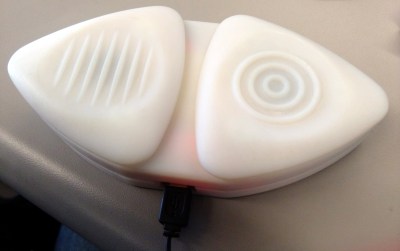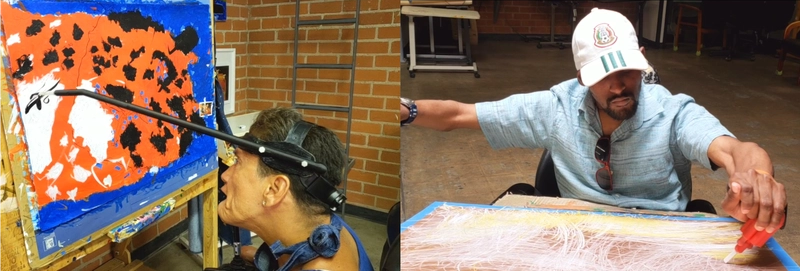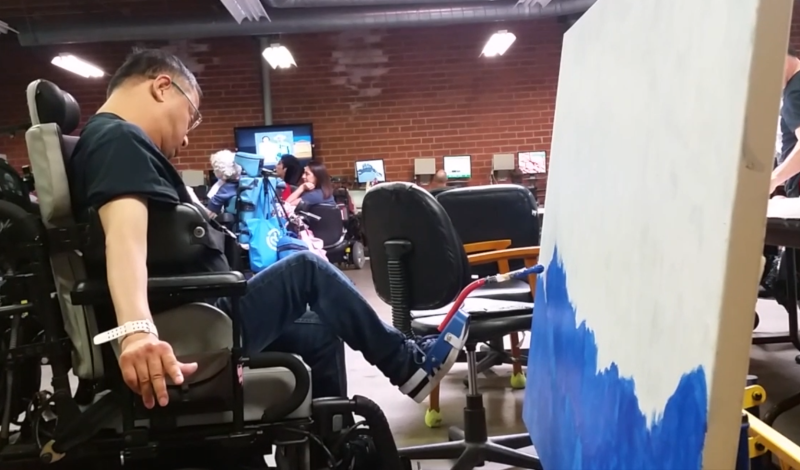Take a second to imagine all the people in your life. Your family, friends, coworkers. Your buddies down at the hackerspace, and anyone you chat with on IO and over the airwaves. Statistically speaking, one in four of these people has a disability of some kind, and needs help doing everyday things that you might not think twice about — simple things like opening doors or interacting with computers. Or maybe that one in four is you.
For the past 75 years, United Cerebral Palsy of LA (UCPLA) have been helping people with various developmental and intellectual disabilities to live independently with dignity. They work directly with members of the disabled community to develop assistive technology that is both affordable and dependable. UCPLA helps the disabled community with everything from employment to providing a creative outlet, and gives them the tools to do these things and more. Their mission is to help people be as independent as possible so they can feel good about themselves and enjoy a life without limits.
 The people behind this non-profit are all about inclusion, access, and opportunity, and this is why we are proud to partner with UCPLA for the 2020 Hackaday Prize. With the world in upheaval, there is no better time to build a better future for everyone. You never know when you might need assistive technology. In addition to the open challenge that calls for everyone to work on a design, this year there is also a Dream Team challenge which offers a $3,000 per month stipend over the next two months to work on a team addressing one specific challenge. Apply for that asap!
The people behind this non-profit are all about inclusion, access, and opportunity, and this is why we are proud to partner with UCPLA for the 2020 Hackaday Prize. With the world in upheaval, there is no better time to build a better future for everyone. You never know when you might need assistive technology. In addition to the open challenge that calls for everyone to work on a design, this year there is also a Dream Team challenge which offers a $3,000 per month stipend over the next two months to work on a team addressing one specific challenge. Apply for that asap!
What kind of challenges has UCPLA outlined for the Hackaday Prize? Let’s dive in and find out, and we’ll also hear from the UCPLA team in a Q&A video at the end of the article.
Assistive Technology Needs Your Help
UCPLA’s technology designer and Hackaday Prize mentor Aragna Ker knows all about what goes into a successful piece of assistive tech, and he’ll be around to help with any questions you might have. Aragna designs all kinds of adaptive equipment for UCPLA that allows people to work with computers and do other jobs, cook for themselves, and be creative with a paintbrush or a piece of chalk. The biggest insight he’s learned is that designing for natural movement is key. Assistive tech should always be an extension of natural movement, and never work against it.
Cerebral palsy affects a person’s movement, posture, and balance. Symptoms of cerebral palsy differ from person to person, but most have to do with limited muscle control. Depending on their physical ability, a person might be using this technology with their hands, feet, head, or even their elbows to do anything from opening restroom doors to painting pictures.
Each person has their individual abilities and preferences, so try to design with scalability in mind. Take the case of this paintbrush holder that attaches to your foot. Considerations need to be made for the way a user’s wheelchair is positioned — it could be upright, reclined, or somewhere in between.
Assistive tech comes with some general challenges, too. Much of the commercial technology that UCPLA is looking to improve upon is not only expensive, closed-source, and difficult to get, but it’s clunky and, quite frankly, completely uncool looking with limited color choices. Some things that should be sturdy, like joysticks, are anything but. The worst part is that many disabled people are on government assistance, and have very little money left over each month for technology after buying the necessities.
The Time Is Now
The Hackaday community are no strangers when it comes to designing and building awesome assistive technology. We’ve seen you do amazing things in this realm in past years of the prize as well as in your everyday projects. We need you to put those skills to the test and come up with sturdy, scalable, cool-looking tech that everyone would want to use.
Open Call Challenge



The UCPLA Open Call Challenge is your chance to redesign existing adaptive tools to be open-source and more affordable. These tools include workstations, camera tripods that mount onto wheelchairs, and input devices like trackballs and joysticks. Here’s the full design brief for this challenge (PDF) to help get you started.
If you need inspiration, check out these three assistive tech Hackaday Prize entries from years past that we’ve highlighted. They are each an example of input devices that combine the advancements of small or medium scale manufacturing over the past decade, designed to meet specific needs.
A big problem with designing assistive technology is that securing funding for good ideas usually carries a high burden of proving all the R&D has already been done. Imagine the benefit If we could create a huge open source library of designs that had been researched, prototyped, tested, and well-documented. It could supercharge the effort make quality custom interfaces more widely available and at a lower cost to the people who need them the most. That is part of the mission of this open call challenge.
UCPLA Dream Team Challenge
The application deadline for the Dream Team Challenge has been extended to June 9th. Twelve members spread across four teams will each receive a $3,000 per month stipend to work on a special challenge over the next two months. The UCPLA team’s task will be to build a universal wireless remote control that can connect to any piece of technology a person might encounter in their daily lives, and help them make choices quickly and easily without assistance. Ideally, this remote would have the ability to toggle instantly between devices.
We know this challenge sounds wildly open-ended, and it sort of is in some ways. Part of what makes this a challenge is the creative restrictions — this remote needs to operate using only joysticks, touch pads, and large, sturdy buttons. In selecting the team, UCPLA is looking for creative thinkers who can deal with open-ended challenges, and are willing to take an open approach to designing these tools. We can’t wait to see what the team can do!
It’s easy to take your physical independence for granted. But without it, you don’t have much power, and you don’t get a lot of choices. Let’s make a better future for everyone, regardless of ability. Begin your Hackaday Prize entry today!





















A worthy cause!
Tablets/computers are cheap and can support numerous communication protocols. Presumably eye tracking can be made cheap as well.